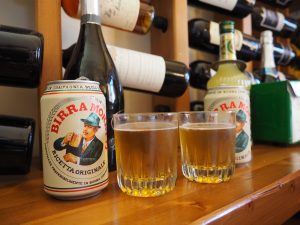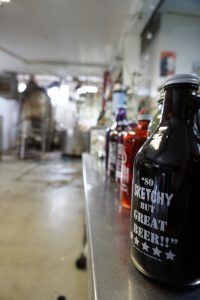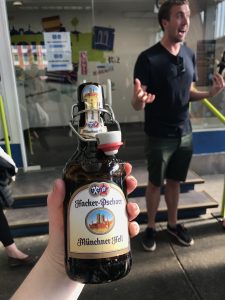The craft beer movement in the United States is unlike any other.
Microbreweries seem to be popping up everywhere, and no matter where you go there’s a crowd indulging in the hop-centric beverage. Craft breweries have become an iconic symbol of living the American dream as thousands of families and homebrewers take the leap toward establishing their brand.

This American trend doesn’t seem to be reciprocated in other parts of the world, however.
At least not yet, or not to the same extent. Germany, for example, is still known for the beer produced in centuries-old breweries (ever heard of the Big Six in Munich?). Several Belgian beer styles have monastic roots, and Guinness remains the powerhouse in Ireland. Why don’t small microbreweries have the same traction internationally that they do here in the US? Is it simply that these historic, traditional, big-name breweries continue to overshadow any effort made by up-and-coming little guys?

I have often wondered this as I travel through parts of Europe, stumbling on very few craft breweries in my track. Even if I was looking for a craft beer on tap at a pub, I seldom saw one. I decided to do some digging to see if I could find an answer.

Turns out craft beer is a steadily growing industry worldwide, with the US (unsurprisingly) still dominating the playing field.
Several countries in the UK and Europe are jumping on the bandwagon, and a few other countries such as Canada, Japan, and Brazil and following suit, too. With that said, the divide between the microbrewery revolution in the states and the deeply rooted beer traditions elsewhere in the world still hold true.


When The Beer Connoisseur asked their international correspondents to nominate the world’s best beer cities, American cities topped the list. There’s no doubt that the dense populations of microbreweries scattered throughout the nation attracts beer geeks from around the world. Some European cities did make the “Best Beer Cities” list, too. Commentary indicated that they did so because of both their historic roots in brewing, and the blending of new beer brewers into the culture. You can check out the article here.
I think something that sets American craft beer apart from other beers of the world is the variety of beers, along with the infusion of unique ingredients, that US microbreweries produce.
No longer is it simply the barley, hops, water, and yeast that contribute to the flavor profile of a beer! The fact that one small brewery will feature citrus IPAs, chocolate porters, barrel-aged ambers, and dry-hopped lagers, all made on the premises within which you are consuming it, is very unlike what breweries in other parts of the world offer. American beer culture welcomes this creativity!

Stylistically, many other countries focus on only a few styles of beer and capitalize on those (Belgium being an exception to this rule).
Sticking to brewing traditions is not a bad thing at all, especially when you consider the reputations that stand behind words like “Hacker-Pschorr” or “Sapporo”. Countries that have become known for particular styles or brands of beer capitalize on it through exports. These beers are appreciated world-wide for what they offer as a result.

While some American craft breweries are venturing into an international space (see: Stone Brewing’s new location in Berlin), the term “American beer” (unfortunately) still refers to brands like Budweiser and Coors.
The craft beer revolution in the US is too vast and far too diverse to summarize into just one style. I think the benefit of this beer diversity is that American consumers can always find a beer style they enjoy, and beer consumers in the US tend to be much more open-minded about the beer they drink, compared to their more traditional counterparts!

At the end of the day, it’s likely the combination of economic, social, and cultural factors that influence the success of microbreweries throughout the world. America has showcased what is needed for the industry to thrive, and with any luck, other countries will follow suit. I hope the same sense of community seen in American craft breweries can be found worldwide in the future.
